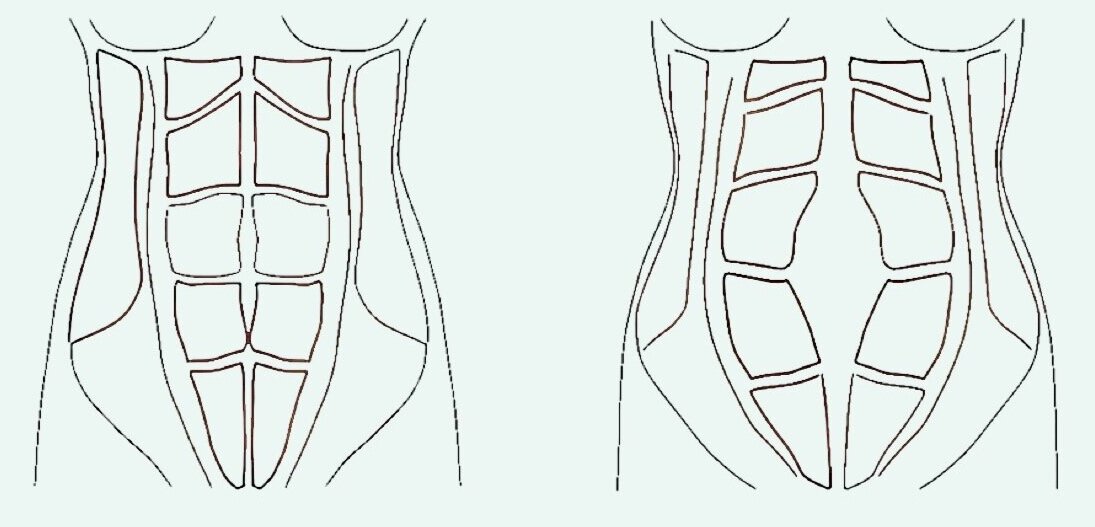Abdominal Separation
Abdominal separation or DRAM (diastasis rectus abdominal muscle) is a thinning and widening of the linea alba, with weakening of the rectus muscles. The rectus abdominis muscles are the ‘6-pack’ muscles that line the front of the trunk. The linea alba is the midline connection between the two rectus muscles. It runs from the breastbone to the pubic bone. The linea alba is a flexible structure that is made of collagen and has the ability to stretch. With prolonged periods of increased intra-abdominal pressure, such as pregnancy, the linea alba thins; which occurs in all pregnant women by 35 weeks.
Important note:
All women have a distance (or width) between their rectus abdominis muscles, where the linea alba is located
A distance of 1-2cm is considered the normal width
Age, genetics, a history of chronic straining conditions, the size of the baby and multiple pregnancies can all affect how much the linea alba stretches. Due to these factors, some women can report abdominal separation earlier in their pregnancy than others. For many women they experience a doming (or coning) at the midline along the linea alba during activities of increased abdominal pressure or during abdominal exertion.
What can you do doing PREGNANCY to give yourself the best healing POSTPARTUM?
Diaphragmatic breathing - breathing can help to distribute pressure through the abdomen
Posture - the ‘pregnant lean’ places increased stretch on the linea alba. Aim to stand in a neutral spine with the breastbone stacked over the pubic bone
Wear supportive garments
Choose pregnancy safe core exercises (avoid crunch style exercises that increase the load in the abdomen)
Avoid activities that cause doming; if it occurs with sitting up in bed, try rolling on your side and pushing up
What about postpartum?
Abdominal separation is a normal process in pregnancy, most women after delivery will resolve with correct advice and movement patterns. Poor abdominal muscle recovery postpartum is usually due to poor technique, fear of movement and non-optimal rehab.
DRAM treatment focused on rebuilding the abdominal wall’s strength and education on the management of symptoms. Treatment is completely individualised after an assessment of your abdominal wall and how it functions, your pelvic girdle, your pelvic floor and your breathing patterns.
By 12 months postpartum, 23-32% of women still report abdominal separation. ‘The Gap’ is typically why women present for an assessment of their abdominal separation - however, as a women’s health physiotherapist, I am more concerned with the depth and thickness of the linea alba on assessment and the ability to create tension in your core.
Postpartum presentations of DRAM:
Abdominal doming or sinking at the midline
A feeling of weakness in the abdominal wall
Soft ‘gap’ that is palpable during abdominal contraction
Low back pain
Pelvic floor dysfunction
